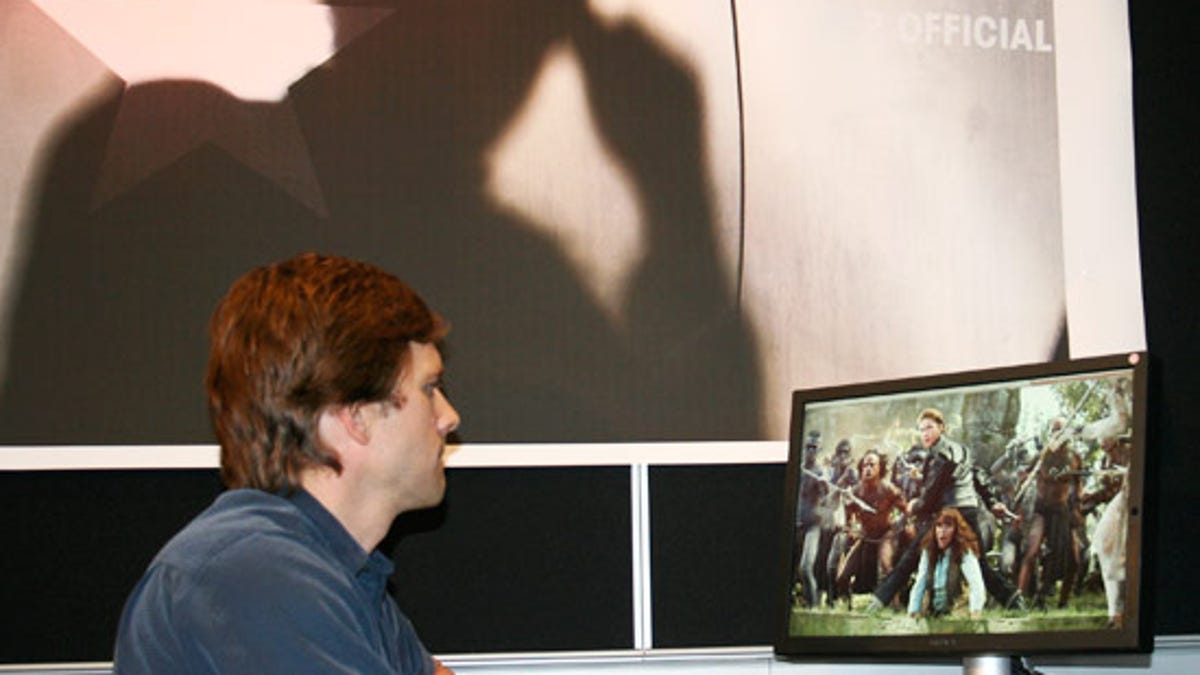'Indiana Jones' graphics meant to go unnoticed
The computer-generated images created by Lucasfilm's Industrial Light & Magic for latest Indy movie were meant to subtly reflect the older prequels.

SAN FRANCISCO--There's just something about that familiar Indiana Jones music. You know it--dun ta dun ta, dun ta da...
Even having spent months slaving over some 540 computer-generated images for the just-released Indiana Jones and the Kingdom of the Crystal Skull, the admittedly jaded Hayden Landis still gets excited when he hears that theme song.
"The little kid in you comes out," said Landis, computer graphics supervisor on the film, recalling the music in the opening of the movie trailer. "I grew up with Indiana Jones."
It's that very nostalgic feeling that Landis and his team atLucasfilm's Industrial Light & Magic tried to create with the film's visual effects--at director Steven Spielberg's request, Landis said.
Whether it was from nostalgia or some other motivation, people have turned out for the movie in force. Hollywood Reporter said Sunday that Kingdom of the Crystal Skull has tallied an estimated gross of $269 million worldwide for its opening weekend, finishing No. 1 in all major markets. In the U.S., the Associated Press reported, the movie grossed an estimated $101 million from Friday to Sunday, plus $25 million from its opening night Thursday.
Spielberg "wanted to make sure it looked like all the other" Indy films, Landis explained Friday in an interview with CNET News.com here at ILM's headquarters. Spielberg even shot the film with one of the very lenses used for the first Indiana Jones film, Raiders of the Lost Ark, which was released 27 years ago.
From a technological standpoint, that meant some challenges in seamlessly matching the computer-generated images (CGIs) to the older film style--lens scratches and all. In that vein, the computer animation couldn't be "in your face," and if ILM did its job, viewers will hardly notice the 45 minutes of CGI in the film, Landis said. Interestingly, about 300 people worked in-house on CGI for Kingdom of the Crystal Skull, the same number of people who worked on the film's set, Landis said.
Another technological challenge was the sheer array of types of CGI used in a film which, like its prequels, involves worldwide adventure. "We have a bit of everything in this," Landis said, listing examples like water, space, hair, and creatures.
For example, in a jungle chase sequence shot in Hawaii, to make an area look more like undisturbed terrain, the team tapped into ILM's virtual garden library and added lush plants digitally. A relatively plain road was magically converted into a dramatic cliffside, he said.
ILM also created a new software tool for the film called Fracture, which allows the special effects team to "destroy" (i.e. blow up) huge "set pieces," (i.e. buildings), Landis said. These are things that were never possible before CGI, he added, because of health risks or other constraints.
As for working with Spielberg, Landis called it "refreshing," because the director always had a clear big-picture idea of what he wanted and left the details to others.
Next up for Landis is another nostalgia-oriented project--a redo of the Star Tours ride at Disneyland. The big question...will Captain EO make a comeback?
This post was updated at 11:12 a.m. PDT after ILM corrected the number it initially provided of CGI shots in the film. There were 540 CGI shots in the film, not 450.
